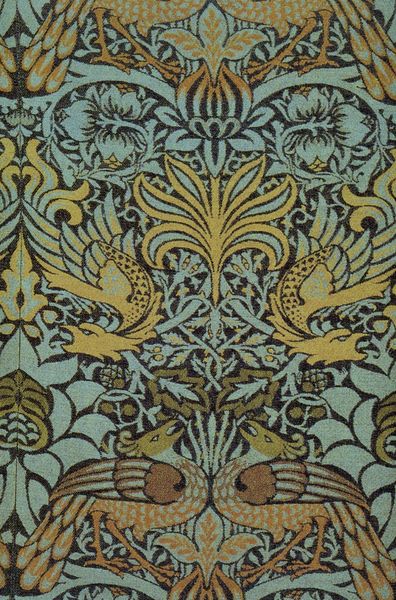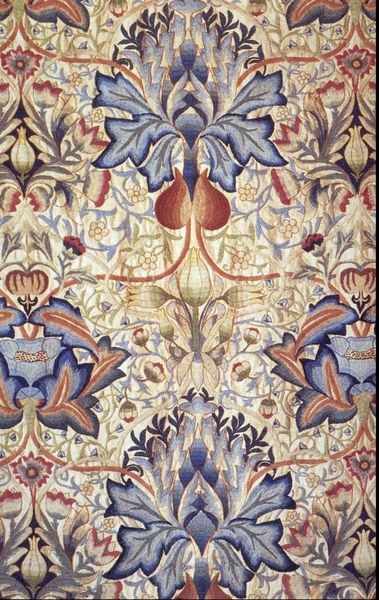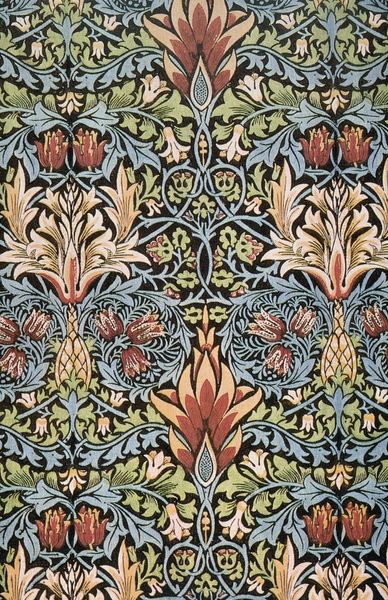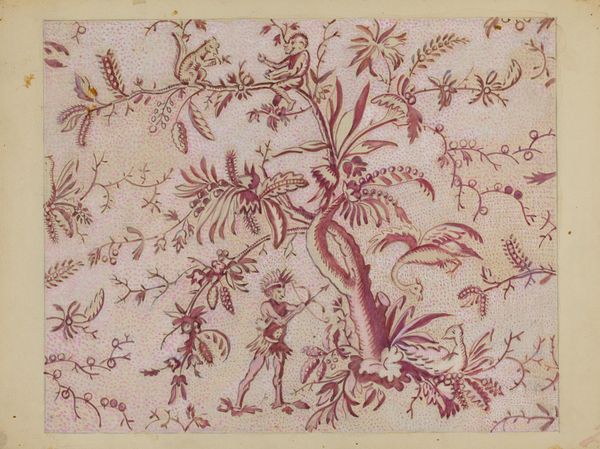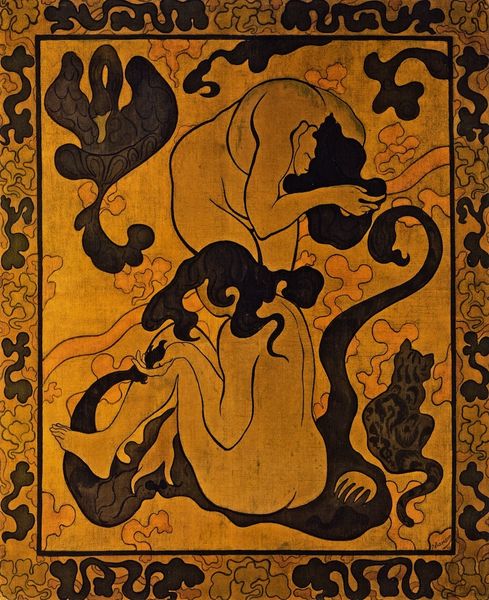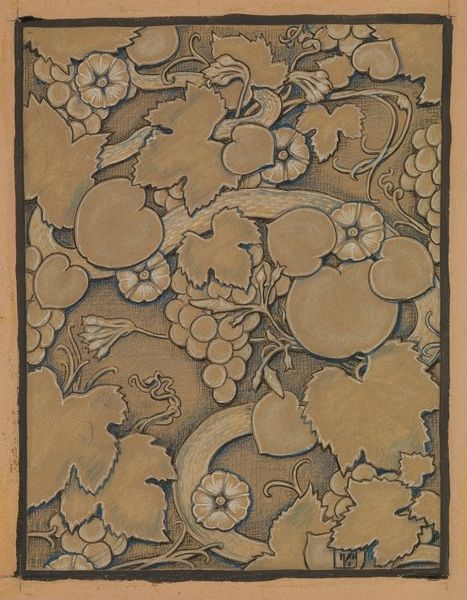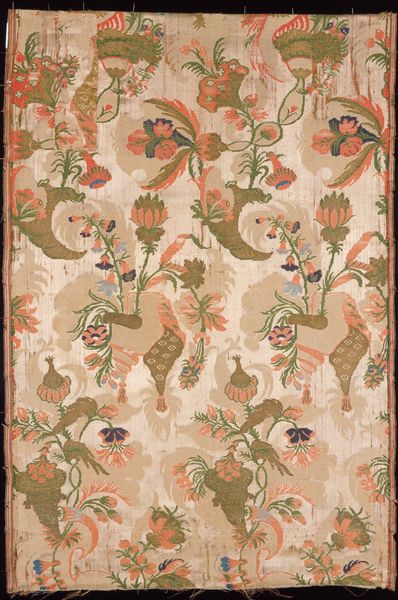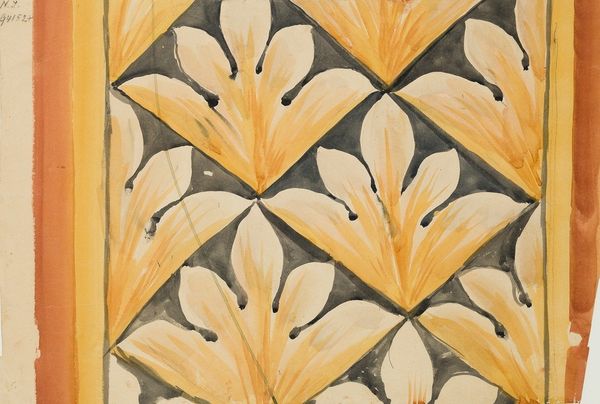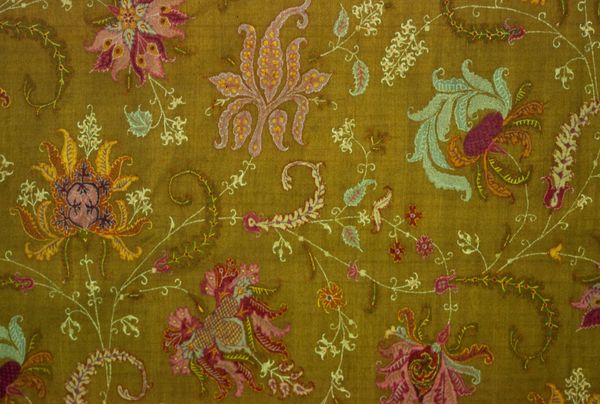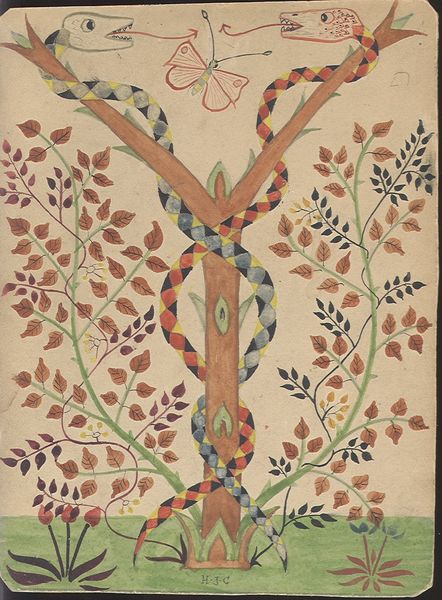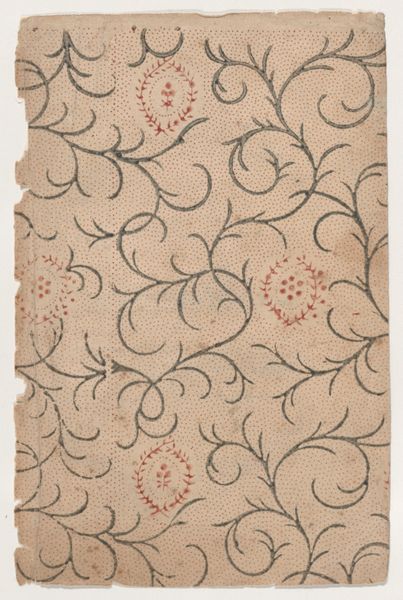
textile, paper
#
organic
#
textile
#
paper
#
organic pattern
#
islamic-art
Copyright: Public domain
Curator: The work we’re looking at is titled "Süleymaniye Kütüphanesi." The piece, done in the distinctive style of Hatip Mehmed Efendi, is primarily made with textile and paper, presenting a captivating display of Islamic artistry. Editor: It's incredibly soothing, almost meditative. The colors are muted, yet the swirling, organic shapes give it a sense of gentle movement, like currents of water. Curator: Precisely. It’s an example of Ebru art, or paper marbling. A technique that has profound roots in Islamic aesthetics. The Ottomans particularly embraced and refined it, linking it to libraries and the preservation of knowledge. Editor: The floral or perhaps foliate motifs keep recurring—what sort of meanings would those shapes have had? Do we see these patterns mirrored anywhere else? Curator: Oh absolutely, flowers symbolize paradise in Islamic art. Their depiction here reflects a connection to the divine. It speaks of beauty and harmony, fitting in a library—a center for learning. Also the floral forms and complex curvilinear lines can be seen echoing throughout Ottoman architectural ornamentation during this era. It really brings to mind an era when books were treasures and artistic expressions permeated all aspects of life. Editor: Knowing the context transforms my initial reaction from just finding it soothing, to seeing how it speaks of a profound reverence for nature and wisdom intertwined. What about its placement? Its role? It seems too decorative to simply wrap texts. Curator: Actually, that's precisely what it was designed for. It's most likely endpapers of a book that lived within the Süleymaniye Library, hence the name. But the artistry elevates it far beyond simple utility, doesn't it? The art of Ebru protected and honored texts housed there by its use in calligraphy and other related media, reflecting the patron’s prestige and importance. Editor: Absolutely, It's beautiful how the tradition blends artistry and intellect, wrapping learning in layers of meaning and visual richness. A hidden piece of art used for more than meets the eye. Curator: Right? In a culture known for complex decoration, it's quite telling of how different mediums spoke the same cultural languages. I am happy for our deeper look at it today.
Comments
No comments
Be the first to comment and join the conversation on the ultimate creative platform.
